Inspiring Ideas for Upcycled Wall Art
Have you ever looked at a pile of discarded materials and thought, "What could I create with that?" If so, you're not alone! Upcycling is not just a trend; it's a movement that allows us to transform the old and forgotten into something truly spectacular. Imagine turning that worn-out wooden pallet into a stunning piece of wall art that tells a story. It's about taking what others see as trash and giving it a new life, a fresh purpose, and a place on your wall. In this article, we will dive deep into the world of upcycled wall art, exploring innovative ideas, creative techniques, and sources of inspiration that will ignite your artistic spirit. Whether you're a seasoned artist or a curious beginner, there's something here for everyone to unleash their creativity!
When it comes to upcycled wall art, the possibilities are endless! You can use a variety of materials that not only showcase your creativity but also contribute to a more sustainable world. Here are some fantastic options:
- Wood: Old furniture, pallets, or even scrap wood can be transformed into beautiful art pieces. The natural grain and texture of wood add warmth and character.
- Fabric: Think of all those old clothes or leftover fabric scraps. They can be turned into colorful patchwork designs or soft, textured pieces that bring a cozy feel to your space.
- Metal: Rusty tools, tin cans, or old metal signs can add a touch of industrial chic to your wall art. The shine and texture of metal can create a striking contrast with other materials.
Each of these materials offers unique textures and colors, allowing you to express your personal style and make a bold statement in your home.
Now that you have your materials, let's chat about techniques! The way you approach your artwork can completely change the outcome. Here are some popular methods that can help you create visually stunning pieces:
Painting is one of the most straightforward yet powerful ways to add life to your upcycled materials. Whether you're using vibrant colors or subtle hues, paint can completely transform the look of your project. Pairing paint with stencils can elevate your designs even further! Stencils allow you to create intricate patterns and add a professional touch to your work.
Color selection is crucial. It can set the mood, evoke emotions, and even define the style of your space. Consider using:
- Warm colors (reds, oranges, yellows) for a cozy, inviting atmosphere.
- Cool colors (blues, greens, purples) for a calm and serene environment.
- Neutral tones (grays, whites, browns) to create a versatile backdrop that complements other decor.
Think of colors as the spices in your art; just the right combination can make your piece pop!
Stencils can be anything from geometric shapes to intricate floral patterns. Here are some ideas to get your creative juices flowing:
- Nature-inspired designs, like leaves or animals.
- Abstract shapes that play with symmetry and balance.
- Inspirational quotes that resonate with you.
These designs can add layers of visual interest and depth to your artwork, making it more engaging for viewers.
Collage and mixed media techniques are fantastic for adding depth and dimension to your wall art. By combining different materials—like photographs, fabric, and paper—you can create a unique artistic expression that tells a story. Think of it as a visual narrative where each element adds to the overall tale. The beauty of mixed media lies in its flexibility; there are no strict rules, just your imagination guiding the way!
Nature is a treasure trove of inspiration for upcycled wall art. Incorporating elements like leaves, branches, and stones can create a harmonious and organic look. Imagine a piece that features pressed flowers or a branch that serves as a frame for a beautiful painting. These natural elements not only enhance the aesthetic but also connect your art to the world outside.
Textures play a significant role in art. By incorporating natural textures—like the roughness of bark or the smoothness of stones—you can create a tactile experience that invites viewers to engage with your artwork. Consider layering different textures to add depth and visual intrigue to your pieces.
Understanding eco-friendly practices is essential for upcycling. Not only does it benefit the planet, but it also enhances the narrative of your art. Here are some tips on how to source materials responsibly:
- Visit local thrift stores or garage sales for unique finds.
- Use materials from your own home that you no longer need.
- Consider swapping materials with friends or community groups.
By minimizing waste and being mindful of your material choices, you can create beautiful art pieces that are not only visually appealing but also kind to the environment.
1. What is upcycling?
Upcycling is the process of transforming waste materials or unwanted products into new materials or products of better quality or for better environmental value.
2. Can I sell my upcycled art?
Absolutely! Many artists sell their upcycled creations at local markets, online platforms, or through social media.
3. Do I need special skills to create upcycled wall art?
Not at all! Upcycling is about creativity and resourcefulness, and anyone can start with basic skills and develop their techniques over time.
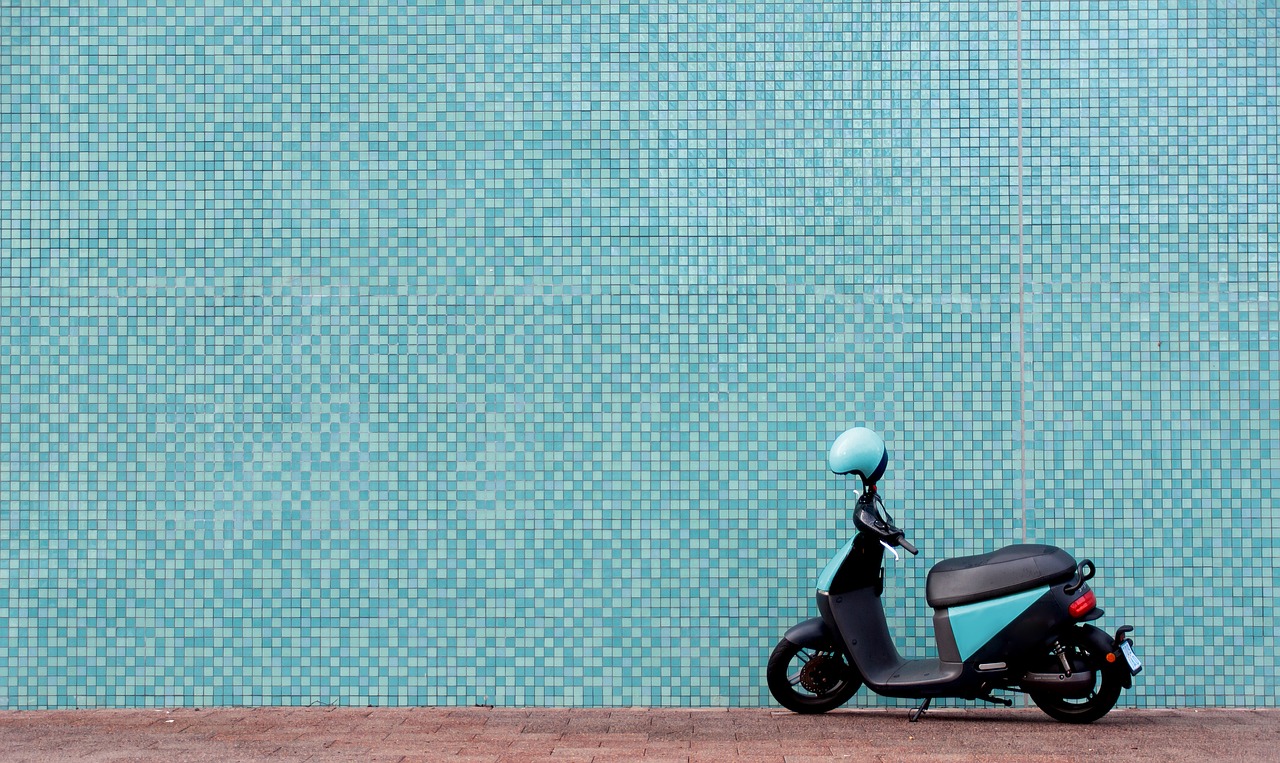
Creative Material Choices
When it comes to creating stunning upcycled wall art, the **materials** you choose can make all the difference. The beauty of upcycling is that you can take **ordinary** or even **discarded** items and transform them into something extraordinary. Imagine walking into a room adorned with art that not only speaks to your creativity but also tells a story of sustainability. So, what materials can you explore to bring your artistic vision to life? Let's dive into some fantastic options!
First up, we have **wood**. Old pallets, discarded furniture, or even leftover scraps can be reimagined into beautiful wooden canvases. The natural grain and texture of wood add warmth and character to any piece. You can leave it raw for a rustic look or paint it to match your decor. The possibilities are endless! Just think about how a simple piece of reclaimed wood can become a stunning backdrop for your favorite quotes or abstract designs.
Next, let’s talk about **fabric**. If you have a stash of old clothes or fabric remnants lying around, they can be perfect for creating unique wall art. You can cut them into shapes or even use them as a canvas for painting. Imagine a vibrant quilted piece that not only adds color but also texture to your wall. The tactile nature of fabric can evoke feelings of comfort and warmth, making your space feel more inviting.
**Metal** is another exciting material to consider. Old cans, scrap metal, or even broken tools can be transformed into eye-catching art pieces. Think about the industrial vibe that metal can bring to your decor. You can create sculptures, wall hangings, or even mixed media pieces that incorporate metal elements to add an edgy touch. The contrast between metal and other materials can create a dynamic visual experience.
In addition to these main materials, don’t overlook the beauty of **natural elements**. Items like leaves, stones, and branches can be incorporated into your artwork for a touch of nature. Imagine a piece that features dried leaves arranged in a beautiful pattern, or a branch that serves as a unique frame for a picture. These natural materials can bring a sense of tranquility and harmony to your art.
To sum it up, the world of upcycled wall art is brimming with creative material choices. Whether you lean towards wood, fabric, metal, or natural elements, each option offers its own unique textures and colors. The key is to let your imagination run wild and see potential in items that might otherwise be tossed aside. So, gather your materials, and get ready to create something that not only beautifies your space but also champions sustainability!
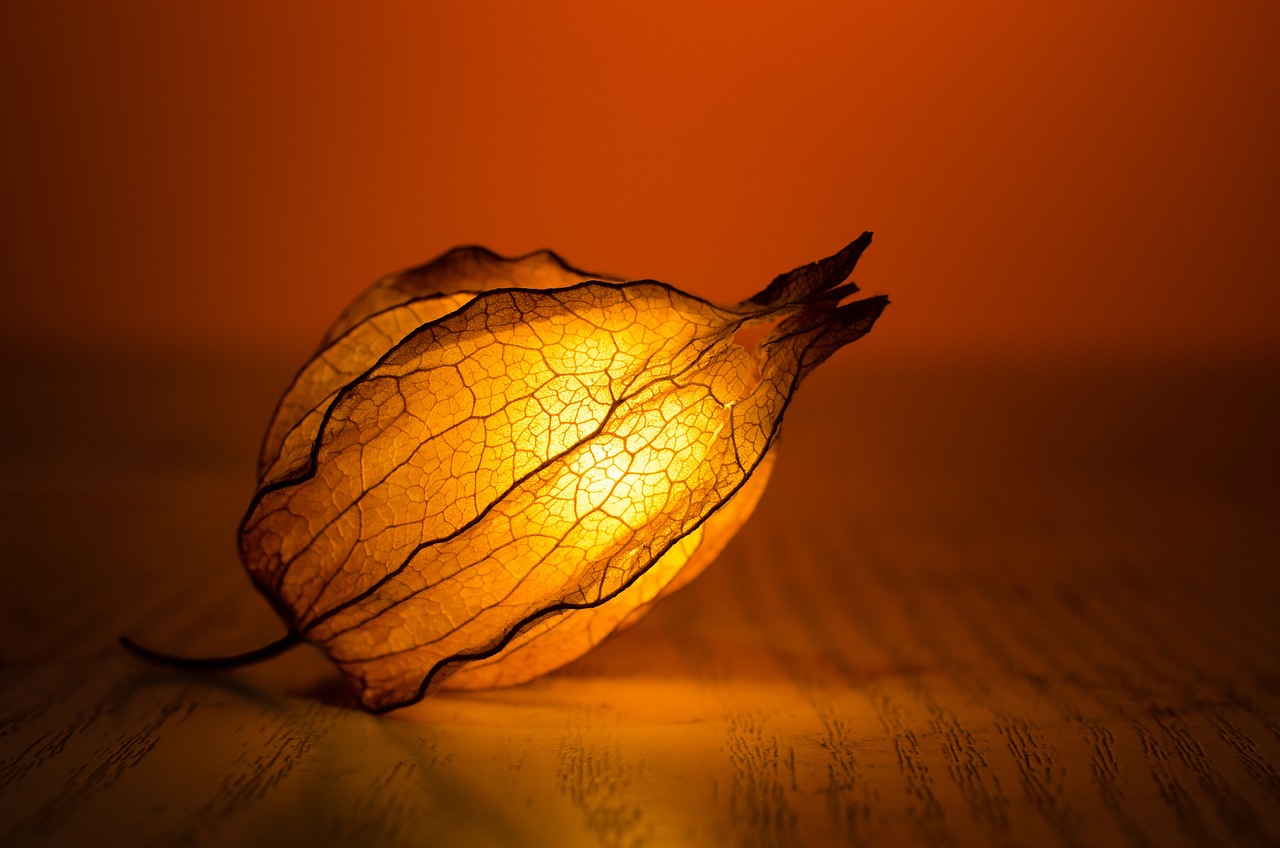
Techniques for Upcycling
Upcycling is not just about taking something old and giving it a new life; it's about unleashing your creativity and expressing yourself through art. There are numerous techniques that can help you transform discarded materials into stunning wall art. Each method offers a unique way to convey your artistic vision, allowing you to experiment and discover what resonates with you. Whether you're a seasoned artist or just starting, these techniques will inspire you to dive into the world of upcycled art.
One of the most popular techniques is painting and stenciling. This method allows you to personalize your upcycled surfaces with vibrant colors and intricate designs. Imagine taking an old piece of wood and transforming it into a colorful canvas where your imagination can run wild. The beauty of painting is that you can choose any color palette that speaks to you, whether it’s soft pastels for a calming effect or bold, vibrant hues for a more energetic vibe. The addition of stencils can elevate your artwork, adding layers of detail and complexity. You can easily create patterns that reflect your style, making each piece truly one-of-a-kind.
When it comes to painting, choosing the right colors is crucial. Colors can evoke emotions and set the mood for your space. For instance, warm colors like reds and oranges can create a cozy and inviting atmosphere, while cool colors like blues and greens can evoke tranquility. Think about the feeling you want to convey in your room and select your palette accordingly. Remember, you can always mix and match to find the perfect combination!
Now, let’s talk about stencil design ideas. Stencils can be anything from geometric shapes to floral patterns, and they can be easily created or purchased. You can even design your own stencils using cardboard or plastic sheets! The key is to think creatively about how you can incorporate these designs into your artwork. For example, you could stencil a beautiful mandala onto a reclaimed door or use leaf patterns on a canvas made from old fabric. The possibilities are endless!
Another exciting technique is collage and mixed media. This approach allows you to combine various materials, such as paper, fabric, and found objects, creating a rich tapestry of textures and visuals. Imagine layering old magazine cutouts, fabric scraps, and even natural elements like dried leaves or twigs to create a stunning piece of art. This method not only adds depth and dimension to your work but also tells a story by incorporating different materials that hold meaning for you.
In addition to these techniques, consider exploring the beauty of assemblage art. This involves assembling various found objects into a cohesive piece. You might gather old tools, broken toys, or even discarded furniture parts, and arrange them in a way that creates a striking visual narrative. The beauty of assemblage lies in its unpredictability; it encourages you to think outside the box and see beauty in the mundane. Each piece becomes a conversation starter, inviting viewers to ponder the story behind the materials.
Whichever technique you choose, remember that the heart of upcycling art is about creativity, sustainability, and personal expression. So gather your materials, let your imagination run wild, and start creating unique wall art that not only beautifies your space but also tells your story.
Q: What materials can I use for upcycled wall art?
A: You can use a variety of materials such as wood, fabric, metal, paper, and even natural elements like leaves and stones.
Q: Do I need special tools for upcycling?
A: While some techniques may require specific tools, many upcycling projects can be completed with basic supplies like scissors, glue, and paint.
Q: Can I sell my upcycled art?
A: Absolutely! Many artists sell their upcycled creations at local markets, online platforms, or through social media. Just make sure to check local regulations regarding selling art.
Q: How do I ensure my upcycled art is eco-friendly?
A: Use materials that are sustainable and sourced responsibly. Additionally, focus on minimizing waste during your creative process.
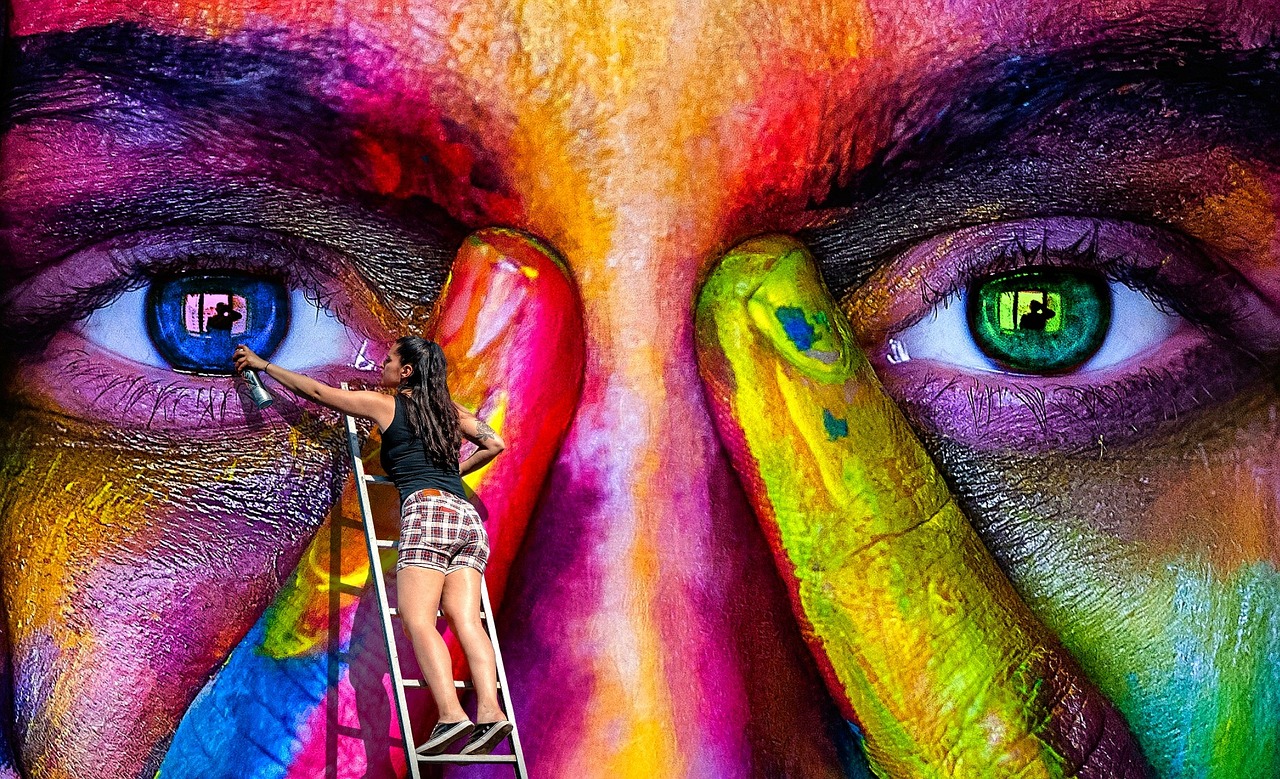
Painting and Stenciling
When it comes to transforming upcycled materials into stunning wall art, are two of the most versatile techniques you can employ. Imagine taking a plain piece of wood or an old canvas and breathing new life into it with just a splash of color and a few creative designs. This process not only allows for a personal touch but also lets your artistic vision shine through. So, how do you get started?
First off, you’ll want to gather your materials. Look around your home; you might find old furniture, discarded wooden pallets, or even fabric scraps just waiting to be transformed. The beauty of upcycling is that you can use virtually anything! Once you have your base, it’s time to think about the color palette. Choosing the right colors is crucial as they can evoke specific emotions and set the overall tone of your artwork. For instance, warm colors like reds and yellows can create a sense of warmth and energy, while cooler tones like blues and greens can evoke calmness and tranquility.
After selecting your colors, consider incorporating stencils into your design. Stencils can help you create intricate patterns and visual interest that might be difficult to achieve with freehand painting alone. You can either purchase pre-made stencils or make your own using materials like cardstock or plastic sheets. The possibilities are endless! Here are a few stencil design ideas to spark your creativity:
- Floral patterns for a fresh, natural look.
- Geometric shapes for a modern, sleek appearance.
- Inspirational quotes that resonate with you.
- Abstract designs that let your imagination run wild.
Once you have your materials and designs ready, it’s time to get painting! Start by applying a base coat to your surface. This could be a solid color or even a gradient for added depth. Allow it to dry completely before placing your stencil. Use a sponge or a brush to dab paint onto the stencil, applying it evenly to avoid any bleed-through. Patience is key here; take your time to ensure clean, crisp lines.
As you work, don't forget to experiment! Mixing colors, layering different stencils, or even using different textures can elevate your artwork to new heights. The goal is to create something unique that reflects your personality and style. Remember, art is subjective, and there are no strict rules—let your creativity flow!
Finally, once your masterpiece is complete, consider sealing it with a protective finish. This step not only enhances the durability of your artwork but also adds a professional touch. Whether you choose a matte or glossy finish, make sure it complements your design.
In conclusion, painting and stenciling are fantastic ways to breathe new life into upcycled materials. With a little creativity and some basic supplies, you can create beautiful wall art that not only beautifies your space but also tells a story of sustainability and innovation. So, what are you waiting for? Grab your brushes, unleash your imagination, and start your upcycling journey today!
Q: What types of paint are best for upcycling projects?
A: Acrylic paints are a popular choice for upcycling due to their versatility and quick drying time. They adhere well to various surfaces and come in a wide range of colors.
Q: Can I use stencils on fabric?
A: Absolutely! Fabric stencils can be used to create stunning designs on items like pillows, curtains, or even clothing. Just make sure to use fabric paint for the best results.
Q: How do I clean my stencils after use?
A: Cleaning your stencils is simple—just wash them with warm, soapy water immediately after use to prevent paint from drying and sticking.
Q: Is it necessary to seal my artwork?
A: While not mandatory, sealing your artwork can protect it from dust, moisture, and fading, ensuring it lasts longer and maintains its beauty.
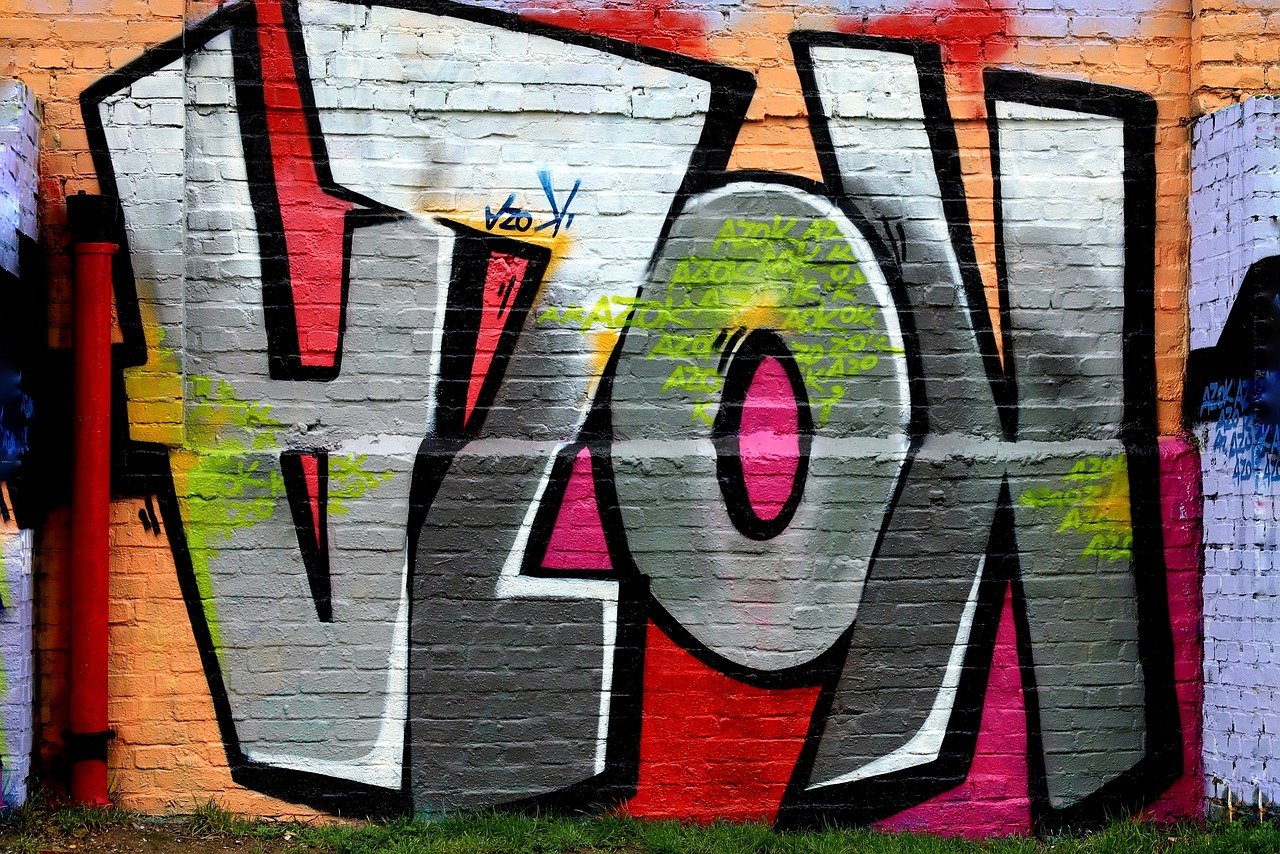
Choosing the Right Colors
When it comes to creating stunning upcycled wall art, can make all the difference. Colors have the power to evoke emotions, set the mood, and even transform the ambiance of a room. Imagine walking into a space adorned with vibrant hues that energize you or soft pastels that create a sense of calm. The right color palette can turn your recycled materials into masterpieces that speak to the heart and soul of your home.
First, consider the purpose of your artwork. Are you aiming to create a lively focal point in your living room, or do you want a serene backdrop for your bedroom? Understanding the emotional impact of colors is crucial. For instance, warm colors like reds and oranges can stimulate energy and excitement, while cool colors such as blues and greens promote tranquility and relaxation. By aligning your color choices with the intended atmosphere, you can enhance the overall experience of the space.
Furthermore, think about the existing color scheme of the room where your art will hang. You don’t want your artwork to clash with the surrounding decor. Instead, aim for a harmonious blend. You might choose colors that complement or contrast with the existing palette. For example, if your walls are painted in a neutral beige, a burst of teal or mustard yellow can create a striking visual contrast, drawing attention to your upcycled art. On the other hand, if your room is already bursting with color, consider using more muted tones for your artwork to avoid overwhelming the senses.
Another important aspect is the psychological effects of colors. Each color carries its own set of associations and meanings. Here’s a quick overview of some common colors and their emotional impacts:
| Color | Emotion | Use in Art |
|---|---|---|
| Red | Passion, Energy | Use for dynamic pieces |
| Blue | Calm, Trust | Great for serene landscapes |
| Yellow | Happiness, Optimism | Perfect for cheerful accents |
| Green | Growth, Harmony | Ideal for nature-inspired art |
| Purple | Creativity, Luxury | Good for imaginative designs |
As you select your colors, don’t shy away from experimenting! Mixing and matching can lead to unexpected and delightful results. Try using a color wheel to find complementary colors that work well together. This tool can guide you in creating a balanced and visually appealing piece. You might even consider creating a small sample board with swatches of your chosen colors to see how they interact with each other before committing to your final design.
Lastly, remember that your art should reflect your personal style. There are no strict rules when it comes to creativity! Whether you prefer a monochromatic scheme for a minimalist look or a riot of colors for a bohemian vibe, the most important thing is that your artwork resonates with you. After all, upcycled wall art is not just about beautifying your space; it's about expressing who you are and what you love. So go ahead, unleash your creativity, and let your colors shine!
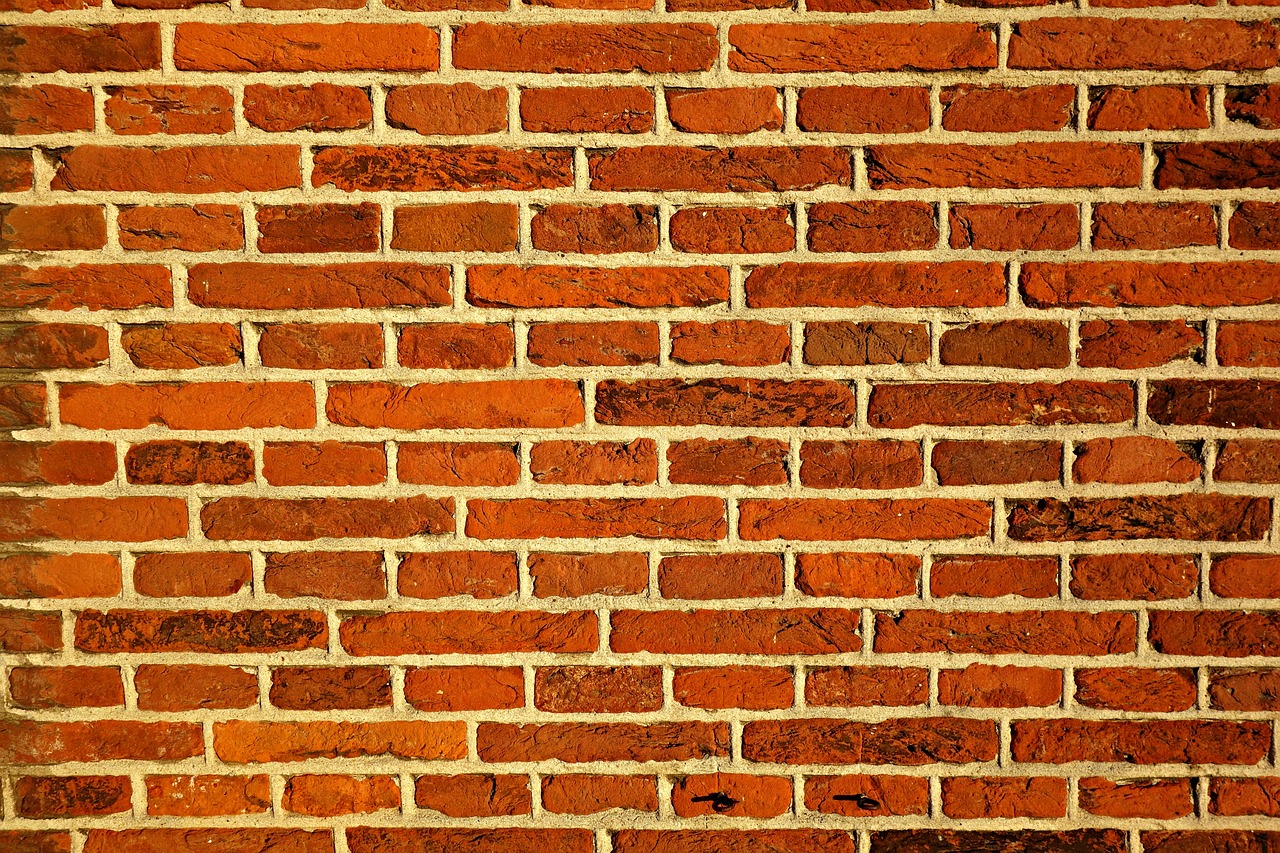
Stencil Design Ideas
When it comes to creating eye-catching wall art, stencil designs can be your best friend. They offer a fantastic way to add intricate patterns and unique flair to your upcycled materials. Imagine transforming a plain piece of wood or an old canvas into a stunning visual masterpiece with just a few strokes of paint. The beauty of stencils lies in their versatility; you can use them to achieve anything from delicate floral patterns to bold geometric shapes.
One of the most exciting aspects of using stencils is the ability to customize your designs. You can create your own stencils or purchase pre-made ones that resonate with your artistic vision. If you’re feeling adventurous, why not try making stencils from materials like cardboard or plastic? This way, you can tailor the size and shape to fit your specific project. The process can be as simple as drawing your design on a piece of cardboard and carefully cutting it out with a craft knife. This DIY approach not only gives you creative freedom but also adds a personal touch to your artwork.
Here are a few stencil design ideas to spark your creativity:
- Floral Patterns: Perfect for adding a touch of nature to your art, floral stencils can bring life and vibrancy to any piece.
- Geometric Shapes: These can create a modern and sleek look, perfect for contemporary decor.
- Inspirational Quotes: Use stencils to paint your favorite sayings or quotes, making your wall art not just beautiful, but also meaningful.
- Abstract Designs: Let your imagination run wild with abstract shapes and lines that can create a dynamic visual experience.
When selecting your stencil designs, consider the overall theme and color scheme of your space. For instance, if you have a cozy, rustic environment, a floral or nature-inspired stencil could enhance the warmth of the room. On the other hand, if your decor leans towards the modern side, geometric shapes in bold colors can make a striking statement. Remember, the key is to create a cohesive look that reflects your personality and style.
After you’ve chosen your stencil design, the next step is to think about the application technique. Using a sponge or a brush can yield different effects, so don’t hesitate to experiment! A sponge can create a softer, more blended look, while a brush can provide sharper edges. Additionally, layering colors can add depth and dimension to your artwork, making it even more visually appealing.
Don’t be afraid to mix and match different stencil designs, either! Combining a few patterns can result in a unique piece that stands out. For example, you could use a floral stencil as a background and overlay it with a geometric design for a modern twist. The possibilities are endless, and the only limit is your creativity.
In conclusion, stencil designs can elevate your upcycled wall art to new heights. By choosing the right patterns, colors, and application techniques, you can create stunning pieces that not only beautify your space but also tell a story. So grab those stencils and let your imagination run wild!
Q: What materials can I use for stenciling?
A: You can use a variety of materials, including cardboard, plastic sheets, and even metal. Just ensure that the material is sturdy enough to hold its shape during the painting process.
Q: How do I ensure clean edges when using stencils?
A: To achieve clean edges, use a stencil brush or sponge and apply paint lightly. Avoid overloading the brush with paint, as this can lead to bleeding under the stencil.
Q: Can I reuse my stencils?
A: Absolutely! Clean your stencils after use and store them flat to maintain their shape. They can be reused multiple times for different projects.
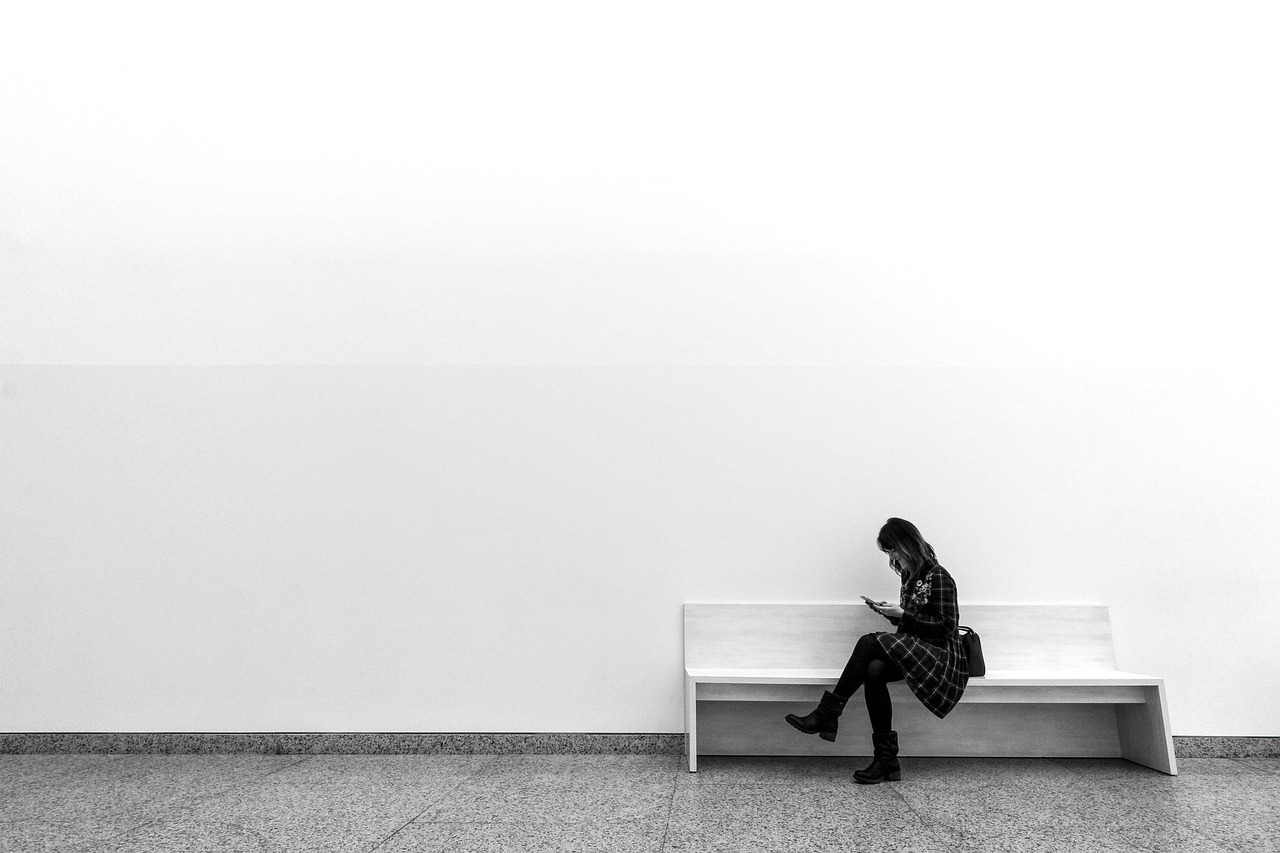
Collage and Mixed Media
When it comes to creating wall art that truly stands out, collage and mixed media techniques offer an incredible opportunity to unleash your creativity. These methods allow you to combine various materials, textures, and colors, resulting in a piece that is not only visually stunning but also rich in meaning. Imagine taking a simple canvas and transforming it into a vibrant landscape of emotions and stories, where each layer tells a part of your artistic journey.
One of the most exciting aspects of collage is the sheer variety of materials you can use. From old magazines and newspapers to fabric scraps and found objects, the possibilities are endless. You might start with a base of cardboard or a wooden panel, then layer on pieces of paper, fabric, or even natural elements like leaves and flowers. The key is to let your imagination run wild and allow each material to contribute to the overall composition. For instance, you can use textured fabrics to create a sense of depth, while shiny paper can add a touch of glamor to your artwork.
To get started with collage, consider these essential techniques:
- Layering: Build up layers of materials to create a three-dimensional effect. This can be done by using foam pads or simply gluing materials at different heights.
- Contrast: Play with contrasting colors and textures to draw the viewer's eye. A rough burlap next to smooth satin can create a striking visual impact.
- Incorporating Text: Adding words or phrases can enhance the meaning of your artwork. Whether it's a quote that inspires you or snippets from an old book, text can add a narrative element to your piece.
Mixed media takes collage a step further by integrating different artistic techniques. You can combine painting, drawing, and even digital elements into your wall art. For example, you might start with a painted background, then add cut-out images from magazines, and finish with a layer of ink or pencil drawing. This approach not only enhances the visual complexity but also allows for a more personal expression of your artistic voice.
As you dive into the world of collage and mixed media, remember that there are no strict rules. The beauty of this art form lies in its flexibility and the freedom it offers. Don't be afraid to experiment! Consider creating a series of small pieces that explore different themes or techniques. This can help you refine your style and discover what resonates with you the most.
Lastly, always keep in mind the environmental impact of your art. By using upcycled materials, you not only create stunning pieces but also contribute to a more sustainable world. So, gather those forgotten items from your home, and let them inspire your next masterpiece!
Q: What materials can I use for collage and mixed media art?
A: You can use a variety of materials, including paper, fabric, metal, wood, and natural elements. The key is to be creative and think outside the box!
Q: Do I need to have artistic skills to create collage art?
A: Not at all! Collage and mixed media art are accessible to everyone, regardless of skill level. The focus is on expression and creativity rather than technical perfection.
Q: How can I ensure my collage art lasts over time?
A: Use high-quality adhesives and sealants to protect your artwork. Additionally, consider framing your pieces to keep them safe from dust and damage.
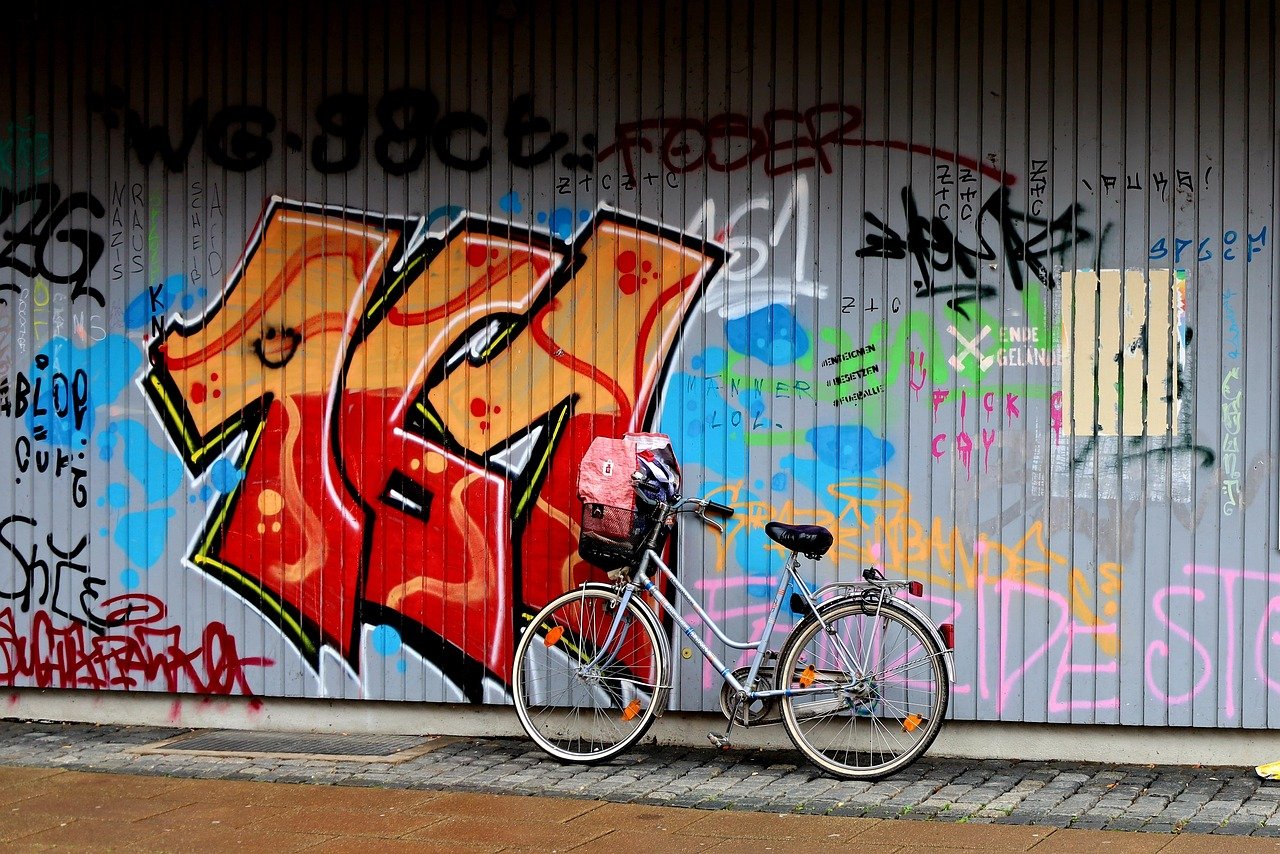
Inspiration from Nature
When it comes to creating stunning upcycled wall art, nature serves as an endless source of inspiration. Imagine the intricate patterns found in the veins of leaves, the rough textures of bark, or the smooth surfaces of stones. These elements not only add beauty but also bring a sense of serenity and connection to the natural world into your home. By incorporating natural elements into your art, you can create pieces that resonate with the environment and evoke feelings of peace and tranquility.
One of the most beautiful aspects of using natural materials is their uniqueness. No two leaves are identical, and each piece of driftwood tells its own story. This individuality allows you to craft one-of-a-kind artworks that reflect your personal style and connection to nature. For instance, consider using fallen branches to create a rustic frame for a canvas or mounting colorful leaves onto a wooden board to form a vibrant collage. The possibilities are as vast as the landscapes that inspire them!
To effectively incorporate natural elements into your wall art, think about the following ideas:
- Natural Textures: Use materials like bark, moss, or even sand to create a tactile experience. Textures can add depth and intrigue to your artwork, making it visually captivating.
- Color Palette: Draw inspiration from the colors found in nature. Earthy tones like greens, browns, and blues can evoke a calming atmosphere, while vibrant hues from flowers can inject energy into your space.
- Organic Shapes: Embrace the irregular shapes and forms found in nature. These can be incorporated into your designs to create a sense of fluidity and movement.
Additionally, you can use natural materials in combination with traditional upcycled items. For example, imagine a canvas adorned with pressed flowers and twigs, framed by reclaimed wood. This fusion of materials not only enhances the visual appeal but also tells a story about sustainability and creativity. Remember, the goal is to create art that not only looks good but also feels good, reminding us of the beauty that surrounds us.
Moreover, consider the environmental impact of your art. By using materials that are locally sourced or found in your own backyard, you contribute to a sustainable practice that honors the planet. This eco-friendly approach not only reduces waste but also encourages a deeper appreciation for the resources we often take for granted. So, next time you’re out for a walk, keep an eye out for potential art supplies—those fallen leaves and interesting stones could become the centerpiece of your next masterpiece!
In conclusion, nature is not just a backdrop for our lives; it is a vital source of creativity and inspiration. By harnessing the beauty of the natural world, you can create stunning upcycled wall art that is not only visually appealing but also deeply meaningful. So, let your imagination run wild, and see how you can bring a piece of nature into your home through your art!
Q: What materials can I use for upcycled wall art?
A: You can use a variety of materials including wood, fabric, metal, and natural elements like leaves and stones. The key is to be creative and think outside the box!
Q: How do I ensure my upcycled wall art is eco-friendly?
A: Source materials responsibly, use items that would otherwise be discarded, and consider local natural materials to minimize your environmental footprint.
Q: Can I combine different techniques in my wall art?
A: Absolutely! Mixing techniques such as painting, collage, and using natural elements can add depth and interest to your artwork.
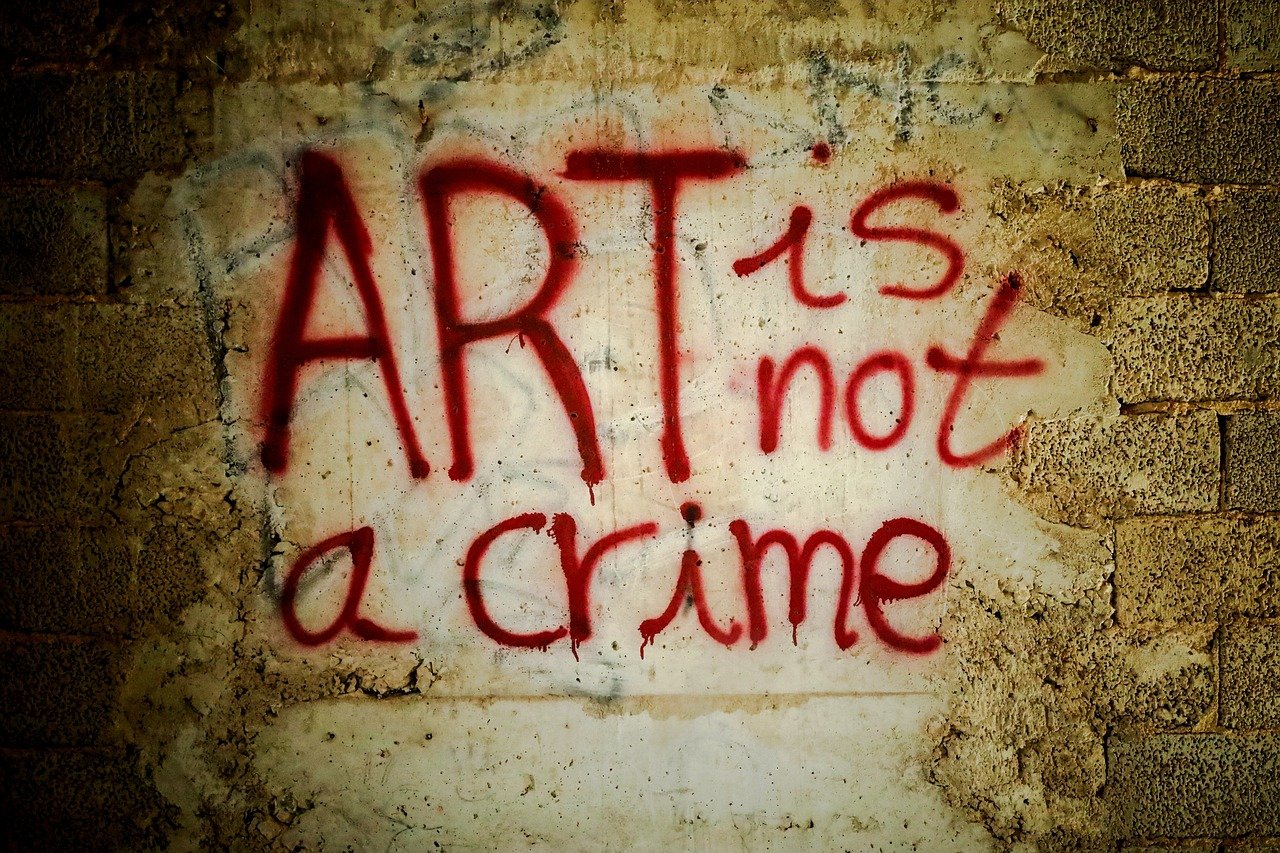
Using Natural Textures
When it comes to creating stunning wall art, natural textures can be your secret weapon. Imagine walking into a room and being greeted by a piece of art that not only catches your eye but also invites you to touch it. That's the magic of incorporating elements from nature into your designs. Whether it’s the roughness of bark, the smoothness of stones, or the delicate patterns found in leaves, these textures can transform a simple piece into something extraordinary.
One of the most exciting aspects of using natural textures is the variety it offers. You can collect materials from your own backyard or local parks, making it a fun and sustainable activity. Think about using items like:
- Tree bark for a rustic feel
- Sand for a beachy vibe
- Leaves for intricate patterns
- Stones for a natural, earthy look
Each of these elements can be combined in various ways to create depth and interest. For instance, layering different types of leaves can create a stunning collage that mimics the lushness of a forest floor. You can also use twigs and branches to frame your artwork, adding a three-dimensional aspect that draws the viewer in. The contrast between the organic textures and the more polished surfaces of upcycled materials like wood or metal can create a captivating visual dialogue.
Moreover, natural textures can evoke emotions and memories, making your wall art not just a decoration, but a conversation starter. Picture a piece that reminds you of a day spent hiking through the woods or a beach vacation. By incorporating these elements, you’re not only beautifying your space but also telling a story that resonates with you and anyone who views your art.
To enhance your artwork further, consider how you can manipulate these textures. For example, you can paint over leaves to create a unique imprint or use stones as stamps to add patterns to your canvas. The possibilities are endless, and the only limit is your imagination! So go ahead, embrace the textures of nature, and watch your wall art come to life in ways you never thought possible.
Q: What materials can I use for upcycled wall art?
A: You can use a variety of materials such as wood, fabric, metal, and natural elements like leaves and stones.
Q: How do I ensure my upcycled wall art is eco-friendly?
A: Source materials responsibly, avoid new products, and minimize waste during your creative process.
Q: Can I mix different techniques in my wall art?
A: Absolutely! Combining techniques like painting, collage, and assemblage can create unique and visually appealing pieces.
Q: Where can I find inspiration for my wall art projects?
A: Nature, art galleries, and online platforms like Pinterest are great places to find inspiration for your creative endeavors.

Eco-Friendly Practices
When it comes to creating stunning upcycled wall art, adopting is as important as the art itself. By prioritizing sustainability, you not only contribute to the well-being of our planet but also elevate the meaning behind your creations. So, how can you ensure that your artistic endeavors are kind to Mother Earth? Let's dive into some essential practices that can transform your art-making process into a more environmentally conscious journey.
First and foremost, sourcing materials responsibly is key. Instead of heading to a craft store, consider looking around your home or community for items that might otherwise end up in the landfill. Think about old furniture, discarded wood, or even fabric scraps. Not only does this reduce waste, but it also adds a layer of history and character to your artwork. For instance, using reclaimed wood from a broken chair can give your piece a rustic charm that new materials simply can't replicate.
Additionally, it's crucial to minimize waste during your creative process. This can be achieved by planning your projects carefully. For example, if you're working with fabric, try to use every scrap. You can even create smaller pieces or embellishments from leftover bits, turning what could be waste into beautiful details. Another clever approach is to organize your workspace efficiently, ensuring that you have a designated spot for all materials. This not only keeps your area tidy but also encourages you to use what you have on hand before purchasing new supplies.
Moreover, consider using non-toxic and biodegradable materials whenever possible. Traditional paints and adhesives can contain harmful chemicals that not only affect your health but also the environment. Opt for water-based paints, natural glues, or even homemade pastes made from flour and water. These alternatives are not only safer for you but also reduce your ecological footprint. When you choose these greener options, you create art that is not only visually stunning but also safe for your home and the environment.
Another fantastic way to practice eco-friendliness in your art is by collaborating with local artists or joining community workshops. This not only fosters a sense of community but also encourages the sharing of resources and ideas. You might discover that someone has a stash of materials they no longer need, which could be perfect for your next project. By working together, you can create a ripple effect, inspiring others to embrace upcycling and sustainability in their own artistic journeys.
Lastly, always think about the lifecycle of your artwork. Once your piece is complete, consider how it can continue to serve a purpose. Could it be gifted to someone who will appreciate it? Or perhaps it can be sold at a local craft fair, with the proceeds going to an environmental cause? By extending the life of your creations, you contribute to a culture of sustainability that resonates far beyond the initial act of making art.
Incorporating these eco-friendly practices into your upcycled wall art not only enhances the beauty of your work but also aligns your creative expression with a commitment to the planet. So, the next time you embark on an artistic adventure, remember that every brushstroke, every piece of fabric, and every reclaimed item has the potential to tell a story—one that champions sustainability and celebrates the beauty of repurposing.
- What materials can I use for upcycled wall art? You can use a variety of materials like wood, fabric, metal, and even natural elements like stones and leaves.
- How do I ensure my upcycled art is eco-friendly? Source materials responsibly, minimize waste, use non-toxic supplies, and consider the lifecycle of your artwork.
- Can I collaborate with others on upcycled projects? Absolutely! Collaborating with local artists or community members can enhance creativity and resource-sharing.
- What techniques work best for upcycling? Techniques such as painting, stenciling, collage, and mixed media are fantastic for transforming discarded materials into art.
Frequently Asked Questions
- What materials can I use for upcycled wall art?
You can use a variety of materials for upcycled wall art, including wood, fabric, metal, and even discarded household items. Each material brings its own unique texture and color, allowing you to create stunning pieces that reflect your personal style.
- What techniques are best for upcycling materials into art?
There are several techniques you can explore, such as painting, stenciling, collage, and mixed media. Each method allows for different creative expressions, so feel free to experiment and find what resonates with you!
- How do I choose the right colors for my wall art?
Selecting the right color palette is crucial as colors can evoke emotions and set the tone for your space. Consider the mood you want to create and choose colors that complement each other and your existing decor.
- Can I incorporate natural elements into my wall art?
Absolutely! Nature is a fantastic source of inspiration. You can use leaves, branches, stones, and other natural textures to bring a harmonious and organic feel to your artwork.
- What are some eco-friendly practices for upcycling?
To practice eco-friendly upcycling, source your materials responsibly by repurposing items you already own or finding them at thrift stores. Additionally, aim to minimize waste by using every part of the material whenever possible.
- Are there any specific stencil designs I should consider?
There are countless stencil designs you can use, from geometric patterns to floral motifs. Look for designs that resonate with your style, and don't hesitate to create your own stencils for a truly personalized touch!
- How can I add depth to my wall art?
Using collage and mixed media techniques can significantly enhance the depth and dimension of your artwork. Layering different materials and textures creates visual interest and a unique artistic expression.



















